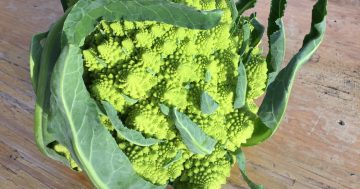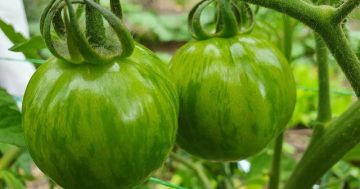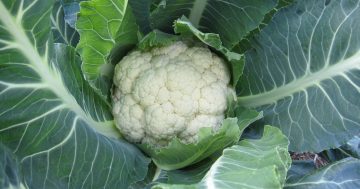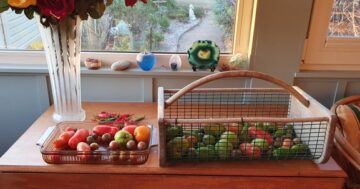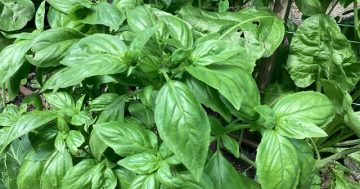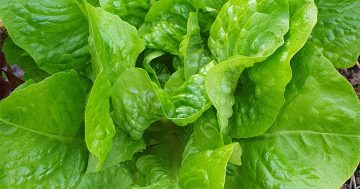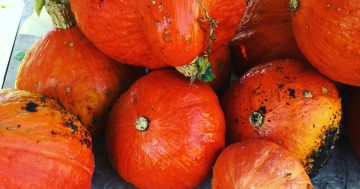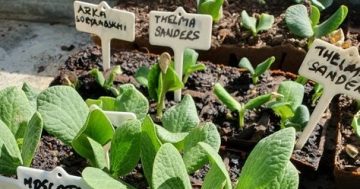
The Lanyon vegetable garden includes dahlias grown for cut flowers and an orchard. Photos: G Jacobs.
Ask Neil Walsh, the Irish-born head gardener at historic Lanyon Homestead what his biggest problem is, and the answer is not 40 degree days, droughts or even people nicking the vegetables. Instead, the horticulturist nominates a problem they never had at the Dublin Botanic Gardens where he did his training.
“Wombats!” he says with a chuckle. “There’s one who comes up from the river every night, gets in through that corner, has a dig up here, a bit of a poo, and does something destructive on his way home. He even turned up when we had Carols by Candlelight and was very puzzled about what all these people were doing in his garden.”
Beautiful Lanyon is in full flower this summer. Heavy wisteria swathes the gracious old verandah posts and roses are in bloom, but nowhere is the fertility and abundance more evident than in the vegetable and cutting gardens, terraced along a slope to the garden’s rear. Huge pumpkins are already sprawling beneath their canopy of leaves.
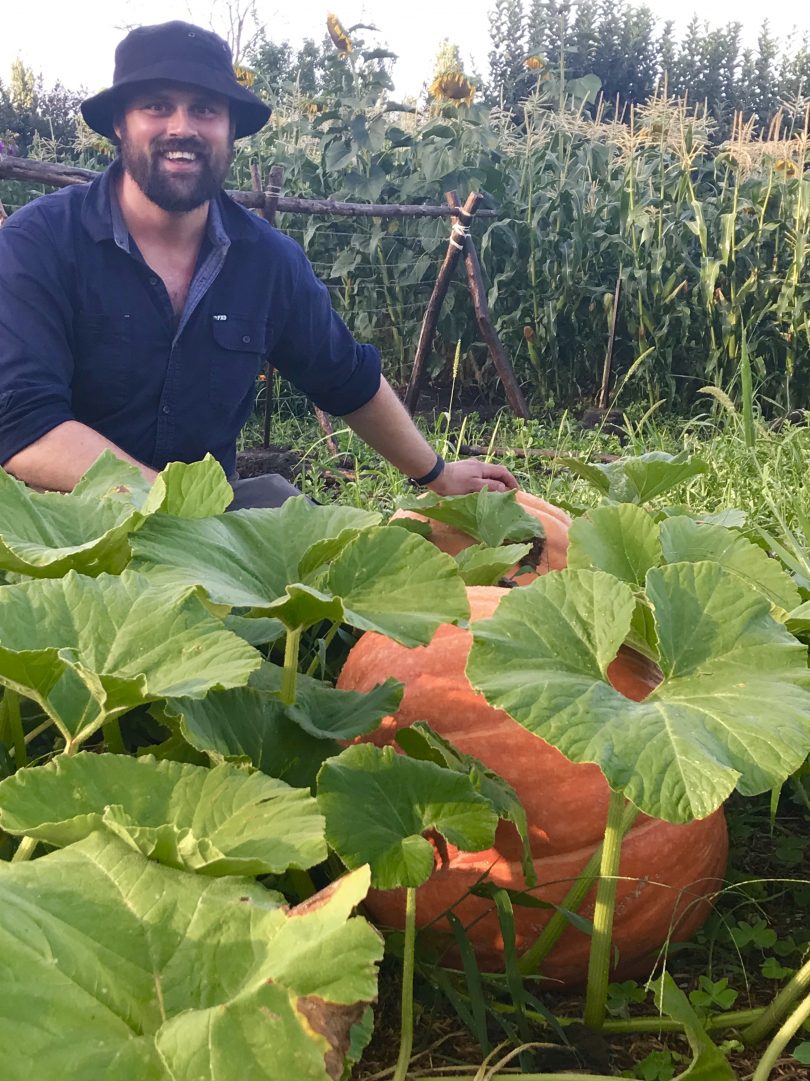
Lanyon head gardener Neil Walsh with one of his giant pumpkins.
Neil strenuously denies using any of the techniques adopted by some pumpkin growing champions: there are no IV lines of glucose here to pump up the volume. Instead, he points to the rich riverside soil carted up the slope decades ago when the property was held by the Field family, in beautiful condition after years of care.
The Murrumbidgee makes big lazy curves just beyond the boundary and it’s not hard to imagine the hive of activity here in the days when Lanyon was a major sheep grazing operation, home to grooms and stockmen, cooks, gardeners and a blacksmith. Tuggeranong is a stone’s throw away across the hill, but you’d never know it, such is the peace.
Today the Lanyon vegetable garden produces prolific stands of rhubarb, gooseberries, blueberries, raspberries and blackberries, corn threaded through with sunflowers, artichokes, tomatoes and butternut squash. An orchard of old-fashioned apples and stonefruit has been renovated in recent years.

Wooden tomato frames are underplanted with nasturtiums for colour and pest control.
Plants are grown from seed in the greenhouse and Neil readily confesses to breaking Canberra’s golden gardening rule about not planting tomatoes outside before Melbourne Cup Day. He claims it’s a gamble worth taking, but I suspect the nearby river also mitigates the frost risks.
Neil says the choice of vegetable varieties is partly determined by Lanyon’s role in teaching people about how large grazing properties operated, but there’s also a broader educational agenda at work. “We have kids come here who have never seen a carrot with green on it or a potato growing. Some adults too, actually!”
The majority of the harvested vegetables go to the Lanyon café, where the chef uses voluminous amounts of fresh salad and vegetables, but also makes preserves, pickles and relishes from old cookbooks. The cutting border also brims with dahlias at this time of the year, while nearby beds are filled with rose bushes that provide blooms for the house.

Blooming artichokes and carrots in the Lanyon vegetable garden.
Research goes into finding plants that fit with Lanyon’s history, and Neil spends some time delving into shipping manifests to discover when vegetable and plant varieties were introduced to Australia. But Lanyon’s story crosses many generations of family and station history, and Neil’s a little tempted by the idea of a modern border of Australian natives who would show locals what can thrive in the climate.
He says many visitors enjoy the house but return for the gardens over and over again. And this is a good time for a visit: there’s a picnic on Australia Day, and Lanyon will host a performance of Twelfth Night in February. The café has a new shade awning, and a wander through the gardens is a delight, even in summer’s intense heat.
You might even see a wandering wombat.












